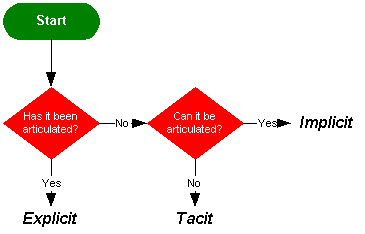Web 2.0 — Making the Implicit Explicit.
I’ve just returned from LotusSphere 2008 and had a great time. While the presentations and demos are interesting, I found the most insightful part of the time there was spent in the Innovation and Development labs talking with developers about the advances they are making. In the Innovation lab in particular, deep conversations can develop and you walk away feeling that some of the concepts will make it into a code.
Loosely speaking, you can categorise a lot of the Web 2.0 tools and concepts into two very high level, broad categories like:
- Organisational Networks — LinkedIn, FaceBook, MySpace, Digg, Del.i.cious etc.
- Collaborative Creation (Wisdom of Crowds type tools) — Wiki’s, Blogs etc.
What’s clear from LotusSphere is that IBM are clearly taking these broad brush categories (perhaps more or less) and building out tool sets like Quickr and Connections that apply these into the corporate world.There are many reasons why this is appealing to corporates, not least command and control within the firewall on what is going on, but the most interesting idea is how it relates to Knowledge Management (KM). In my nearly 20 years in IT, I’ve been involved in various projects in different companies that again and again have tried to address the issue of KM. What these Knowledge Management 1.0 efforts have all had in common, and why they’ve failed, is that they try and formalise the capturing of knowledge that is expressed and documented. When I have to consciously make an effort, through modifying my natural processes and procedures, to share with you, then ultimately the effort will fail. It fails because ultimately, the value in it for me, is not as great as the value in it for you. Once the latest KM drive loses steam, I’ll drift back to my old ways and the path of least resistance.In KM terms this type of knowledge is called Explicit knowledge.

Nickols, F. W. (2000). The knowledge in knowledge management. In Cortada, J.W. & Woods, J.A. (Eds) The knowledge management yearbook 2000–2001 (pp. 12–21). Boston, MA: Butterworth-Heinemann.It’s worth taking a moment to browse the citation as it gives an excellent summary of the three main types of Knowledge as described in KM terms, I’ve paraphrased what I think are the key three here:
- Explicit — What has been expressed and captured
- Implicit — What can be expressed, but isn’t captured
- Tacit — What can’t be expressed (so by definition isn’t captured).
As an aside, I suspect the categories of Tacit knowledge are decreasing over the years (biometrics probably couldn’t be expressed years ago, but now we have computers that can recognise faces in crowds). Anyway, my point is this, while the Web 2.0 world and the categories of tools bring real value to corporations, one form of value I haven’t heard expressed until recently is that they will help corporations capture Implicit knowledge by mining my behaviours and actions.When Lotus Connections 2.0 announced at LotusSphere promises to deliver a Colleagues version of the friending concept, it’s really building an Implicit knowledge network that can be mined for real information that is accessible to all users across the organisation. Atlas mines your e-mail for your connections and expertise. Spock mines social networks for Implicit knowledge on who you are and who you know. Wiki’s mine the knowledge of the crowd through the creation process. When corporations ask what value in Web 2.0 concepts and social networking, they are undervaluing what most would say is their greatest asset — the collective knowledge of their employees. I believe that the real value in a lot of what we call Web 2.0 will be realised when these tools begin delivering ways for corporations to finally tackle Knowledge Management 2.0 — non-intrusive KM, captured by tools that work the way people work and ensure that the Implicit knowledge of the organisation is captured effortlessly by people simply doing their job in the way they want to do it.Based on this, my final three thoughts are simply that:
- The reason Collaborative Creation tools are being adopted by corporations today (and will be at an increasing pace) is because they deliver a form of Implicit knowledge that corporations (slowly and eventually) “get”. Content is delivered in a relatively concrete way that mimics a document to some degree. The stretch is less.
- Social Collaboration tools will begin to boom as Corporations realise that they are a promising solution to unlock the Implicit knowledge within their organisations that they can’t see.
- Discovery and Surfacing tools (of which Spock, Atlas and Particls are all examples of) will become even more critical. Smart ways of unleashing the networks and information people are building to capture and deliver value that was not easily attainable before.
